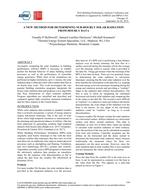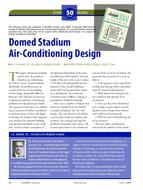Click here to purchase
Heat recovery technologies of variable refrigerant flow (VRF) systems have good potential to reduce the building energy consumption and maintain goodthermal comfort in many commercial building types by allowing individual indoor units to heat or cool as required while the compressor load benefits fromthe internal heat recovery. This study investigates an integrated heat recovery system design of a VRF system with a domestic hot water (DHW) loop usinga hydraulic heat exchanger. With the integrated heat recovery VRF configuration, the condensing heat from vapor compression cycles can be recovered andused for space heating and/or DHW production when space cooling is simultaneously required. This strategy could potentially improve the energy savingsof the existing heat recovery VRF technology and minimize waste heat through VRF outdoor units. The hydraulic heat exchanger linked to the VRFrefrigerant circuit box in this VRF system is connected to the water tank and is able to increase the heat recovery potential on the domestic hot water side.To evaluate energy savings potential of the proposed VRF system, a case study of a nine-story hotel building with 395 guest rooms is carried out in thisstudy using DOE-2.2 in 6 U.S. climate zones. Based on simulated hourly building loads, a calculation tool is also developed to estimate heating/coolingand DHW energy usages. The results from the study show that the annual energy savings of the proposed VRF system can be around 22% to 24% andaround 0.3% to 1.4% in cooling and heating main mode, respectively. In terms of annual DHW energy savings, the proposed VRF system can achievearound 54% to 91% of annual DHW energy savings when compared to the baseline VRF in 6 U.S. climate zones.
Citation: 2019 Winter Conference, Atlanta, GA, Conference Papers
Product Details
- Published:
- 2019
- Number of Pages:
- 8
- Units of Measure:
- Dual
- File Size:
- 1 file , 1.9 MB
- Product Code(s):
- D-AT-19-C050


